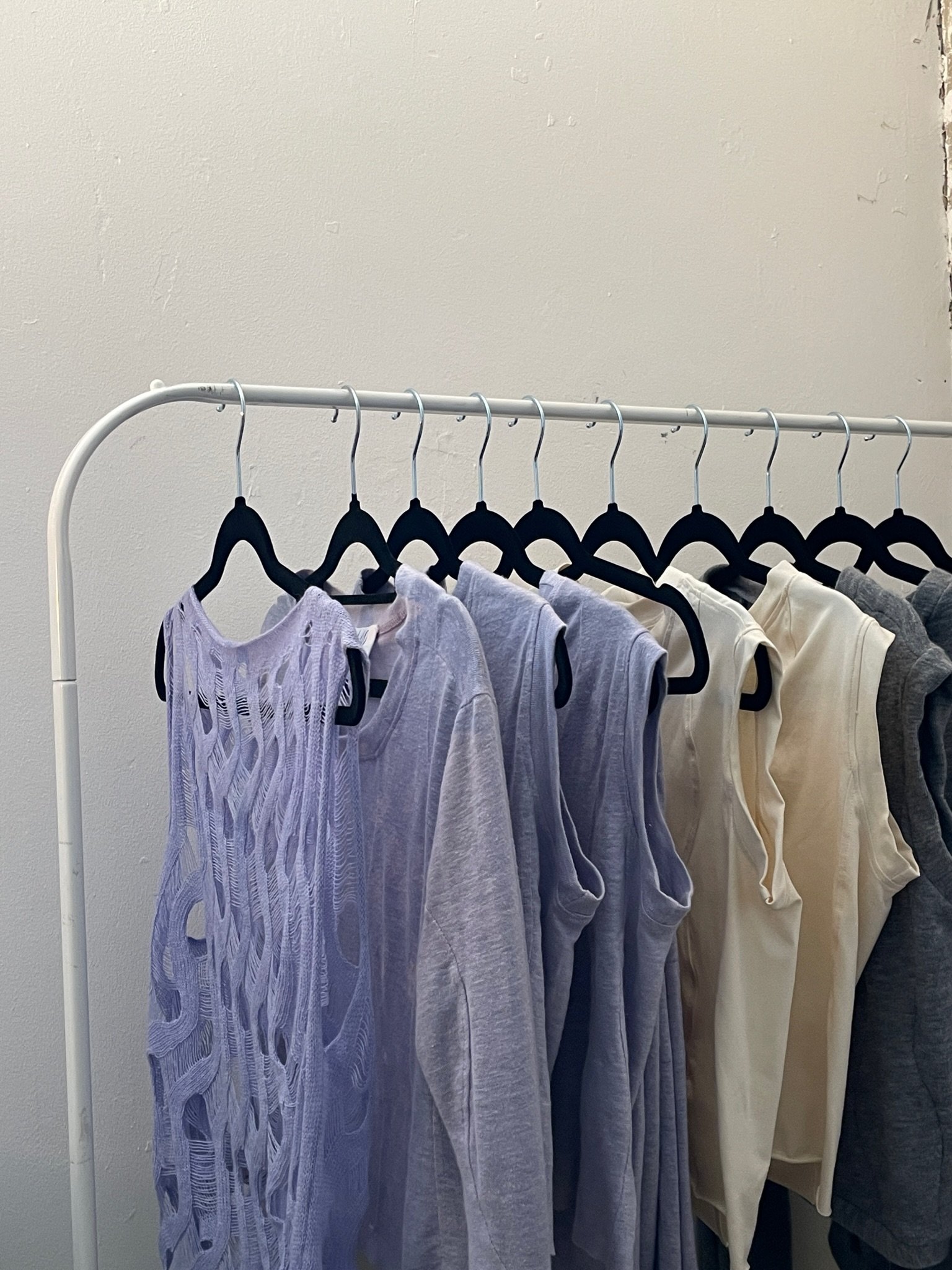Curious, how to enhance the longevity of your clothes? Here are 10 tips:
Investing in quality clothing can be both a financial and environmental commitment. To make the most of your wardrobe and reduce waste, it is essential to extend the lifespan of your garments. By adopting simple yet effective practices, you can enhance the longevity of your clothes, ensuring they remain stylish and wearable for years to come. In this article, we will explore ten valuable tips to help you preserve your clothing and reduce your fashion footprint.
1. Choose Quality Fabrics:
When purchasing new clothes, opt for high-quality fabrics. Natural materials like cotton, linen, silk, and wool tend to be more durable and long-lasting compared to synthetic alternatives. These fabrics are not only more resistant to wear and tear but also more breathable and comfortable. This is the reason why we as W1P Studios choose our materials very carefully and refrain from using any synthetic materials. Learn more about the origin of our materials here.
2. Proper Washing Techniques:
To maximise the lifespan of your clothes, follow the care instructions provided on the garment label. You can usually find the care label in the side seam of our garments. Sort your laundry by colour and fabric type to prevent colour bleeding or damage caused by different washing requirements. Wash your clothes in cold water when possible, as hot water can weaken fibres. Additionally, avoid overloading the washing machine to ensure thorough cleaning without excessive friction.
3. Use Gentle Detergents:
Harsh detergents can be tough on fabrics and contribute to colour fading or shrinking. Opt for mild, eco-friendly detergents that are specifically designed for delicate clothing. Consider using liquid detergent as it tends to be gentler and dissolve more easily than powdered alternatives.
4. Handle with Care:
Treat your clothes with care to avoid unnecessary wear and tear. When removing stains, spot clean the affected areas instead of subjecting the entire garment to a wash cycle. Be mindful when zipping or buttoning your clothes to prevent snagging or pulling on the fabric. Additionally, avoid hanging heavy items on delicate fabrics, as this can lead to stretching or distortion.
5. Air Dry Whenever Possible:
Air drying is the gentlest method to dry your clothes and helps preserve their shape and colour. Hang your garments on a clothesline or drying rack, preferably in a well-ventilated area away from direct sunlight. Avoid using a dryer unless it is absolutely necessary, as the heat can weaken fibres and cause shrinkage.
6. Iron with Caution:
Ironing can be detrimental to certain fabrics, especially those that are prone to heat damage. Before ironing, check the garment label to determine the appropriate heat setting and use a pressing cloth or steam if necessary. If possible, embrace the natural texture of your clothes and reduce ironing altogether.
7. Store Properly:
Proper storage is crucial for maintaining the longevity of your clothes. Fold knits and delicate items to prevent stretching, while heavier items like coats and jackets can be hung on sturdy, padded hangers. Avoid overcrowding your closet to prevent unnecessary creasing or wrinkling. Store clothes in a cool, dry place to prevent moisture-related issues, such as mold or mildew.
8. Mend and Repair:
Rather than discarding clothes at the first sign of damage, consider mending and repairing them. Learn basic sewing techniques or visit a tailor for more complex repairs. Fixing loose buttons, torn seams, or small holes can significantly extend the lifespan of your garments and save you money in the long run.
9. Rotate Your Wardrobe:
Regularly rotating your clothes not only helps you utilise your entire wardrobe but also reduces the strain on individual garments. By giving your clothes ample resting time between wears, you allow them to recover and maintain their shape. A well-rotated wardrobe can minimise excessive wear and extend the longevity of your favourite pieces.
10. Donate and Recycle:
When you no longer have a use for certain clothes, consider donating them to thrift stores. By giving your garments a second life, you contribute to a more sustainable fashion cycle. If your clothes are beyond repair or reuse, explore recycling options available in your area to reduce textile waste.
By implementing these ten simple practices— choosing quality fabrics, washing with care, air drying, proper storage, mending, rotating your wardrobe, and embracing donation and recycling —you can make a significant impact on reducing waste and enjoying your favourite garments for years to come. Let's strive for a more sustainable and mindful approach to fashion.

